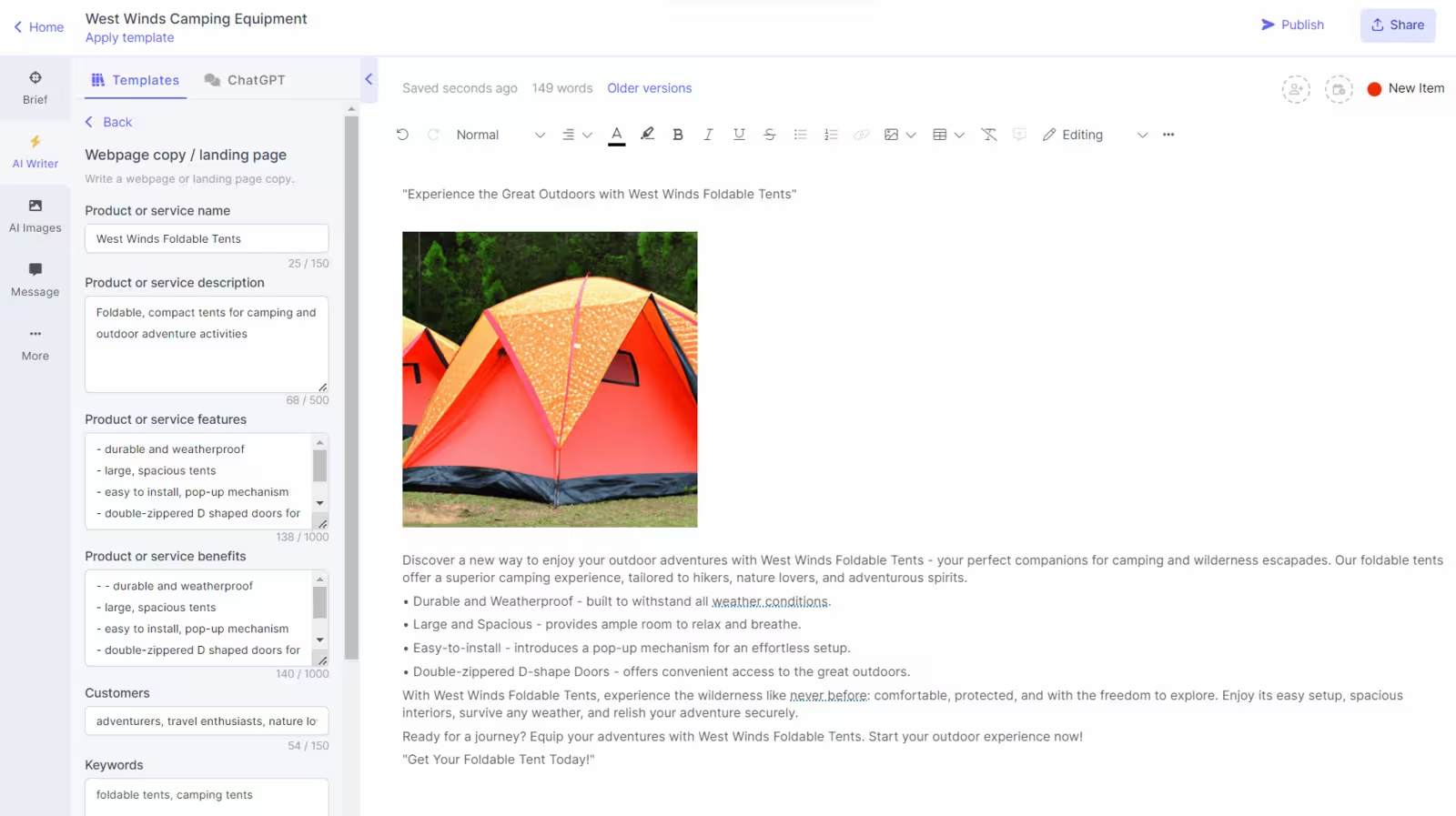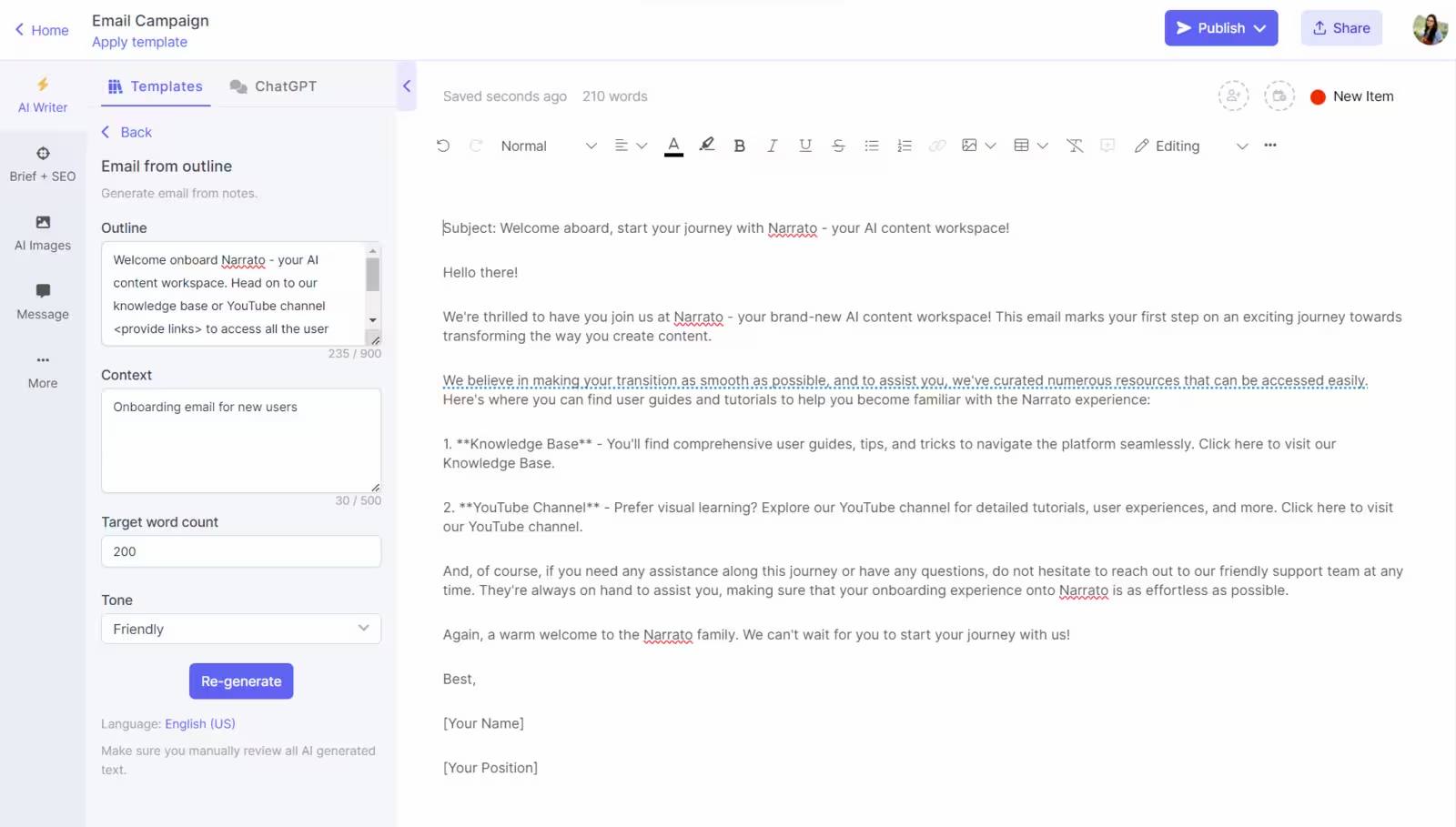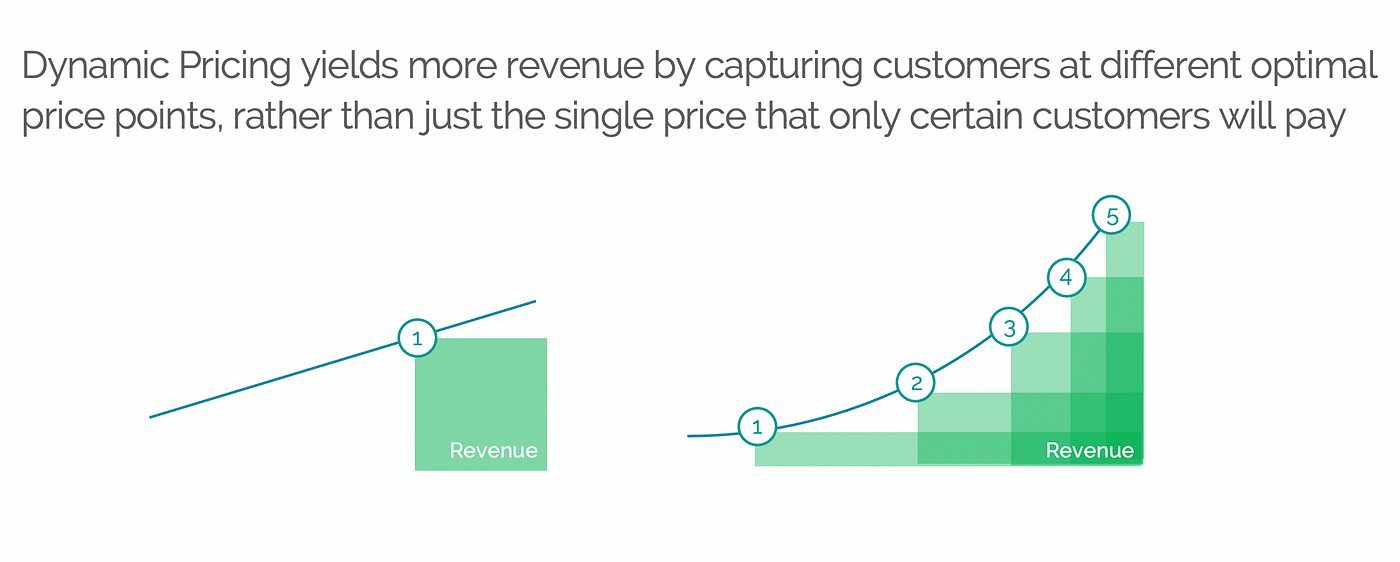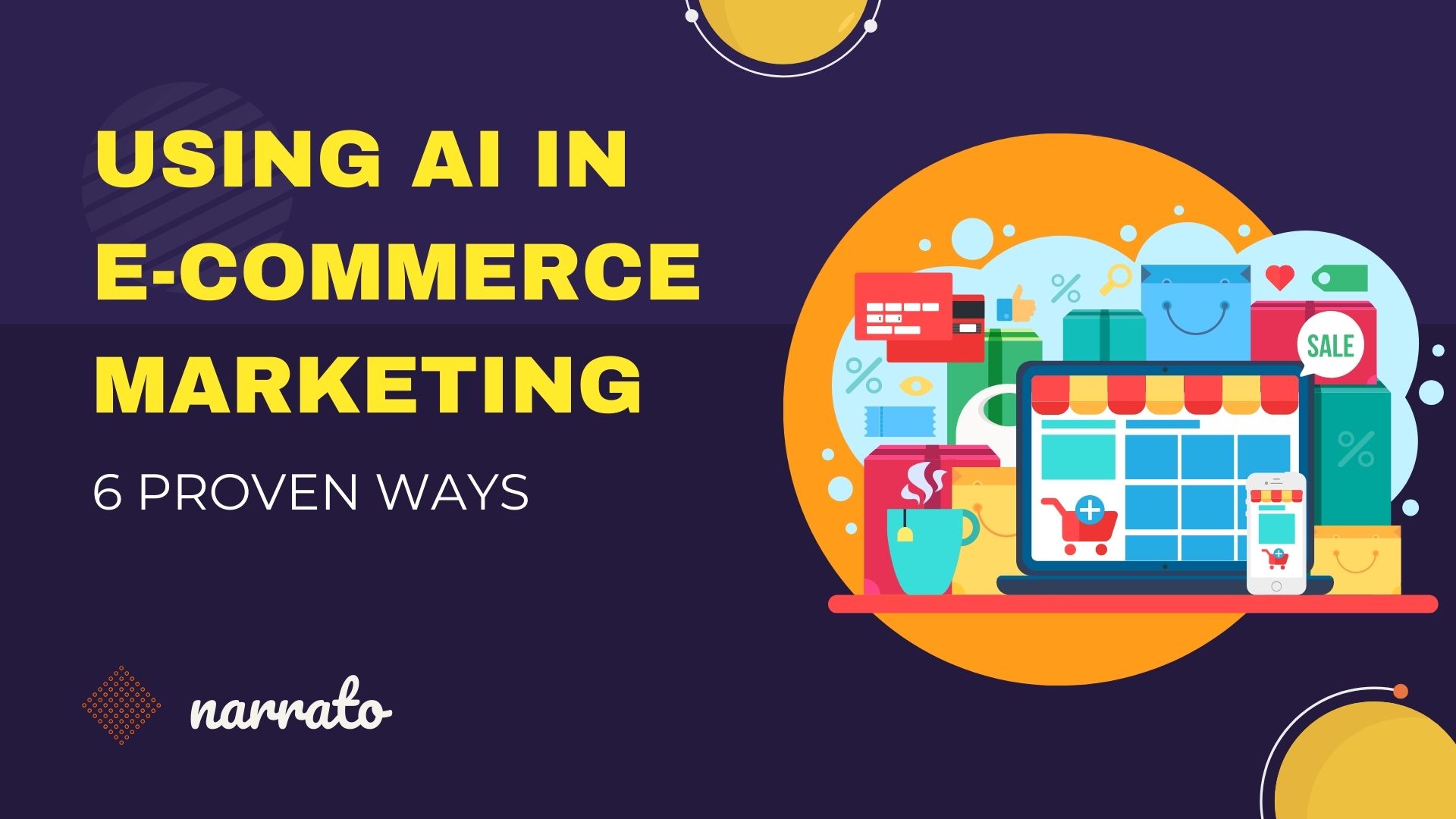Digital marketers have mixed emotions when it comes to AI tech. Some fear that AI’s mechanical grip may snatch away their jobs, while others see it as a positive force influencing their careers. Now, what we know for sure is that artificial intelligence is already a big deal in digital marketing. For example, according to the AI Marketing Benchmark Report 2023 by Influence Marketing Hub, which talked to over 2,700 marketing folks, more than 61% of them already use AI in their work. So, while there’s no definite answer to whether AI in e-commerce marketing will replace human marketers, what we can do is use AI to our advantage, becoming more productive.
As marketing expert Neil Patel says, “The key is getting AI to work with you and not against you by learning the tools.”
And that’s why we’ve gathered here, ladies and gentlemen. Read on to find out use cases that already work for other e-commerce marketers, including:
- Content ideation and creation to tackle writer’s block
- Boosting CRM processes for new insights
- Integrating personalized product recommendations into a website or app
- Predictive analytics for market evaluation and real-time decisions
- Targeted email marketing and advertising to reach and retain customers
- Dynamic pricing and promotions to drive revenue

6 ways to use AI for e-commerce digital marketing illustrated with real-life examples
Let’s dive right into the 6 use cases of AI in e-commerce marketing. From content creation to personalized product recommendations and dynamic pricing, we’ll discuss them all in great depth.
1. Content ideation and creation to tackle that writer’s block
You’re probably not all surprised to see this use case topping the list. After all, creating different kinds of content is what immediately sets AI tools like Narrato and ChatGPT apart. However, the challenge is that often AI content may just be taken for granted making it superfluous, verbose, and cliché. The key here is not to depend on AI alone but to be specific with your inputs or ChatGPT prompts for content creation and to tweak the output freely.
To better understand this, let’s explore seven specific areas/challenges where AI can assist in digital marketing content creation, using Narrato’s AI Content Writing Assistant as an example.
- Overcoming writer’s block: Get inspired and generate new ideas by conversing with an embedded AI chat or using an AI topic generator.
- Speeding up the content production cycle: Get answers to your queries in an AI chat for faster research, and use hundreds of AI templates for blogs, social media, emails and other formats. Also, quickly publish your content to social media, WordPress, Webflow, or any other content management system.
- Balancing brand voice and personality: Personalize content for your brand by choosing the right context, tone, and voice. Platforms like Narrato also let you save your custom brand voices.
- Optimizing content for readers and search engines: Automatically generate SEO content briefs to optimize website, ads, or landing page copy for search rankings. Access all content optimization tools in one place to optimize for Google, readability, and tone.
- Checking text quality: Summarize, simplify, rewrite, and shorten text as needed and run grammar and readability checks in over 50 languages. Use the in-line AI writing assistant for quick fixes on Narrato’s editor.
- Tackling lack of resources: Cover different needs with one solution and turn simple text prompts into AI images, art, and beautiful graphics.
- Social media reach: Generate threads, meme ideas, polls, page introductions, and more with AI social media post generator or get social posts (and blog posts) on autopilot with AI Content Genie. Schedule or publish auto-generated social posts weekly on your favorite social channels.

✅ Outcome: By using AI for content ideation, creation, and optimization, digital e-commerce marketers can generate high-quality, engaging content at scale, saving time and resources while reaching wider audiences across multiple channels.
Read also: 11 ways of using AI for eCommerce content creation
Now, let’s shift our focus to the flip side. Not just what you create for digital marketing campaigns but also the customer feedback you receive and how you can leverage it for valuable insights for your marketing efforts.
2. Boosting customer relationship management (CRM) processes for new insights
The main disadvantage of Zendesk or any other CRM system is data fragmentation. Since CRM systems pull data from various sources like email, phone, chat, social media, virtual assistants, etc., data can become siloed across channels. This makes it harder for e-commerce marketers to get a unified customer view and make data-driven decisions.
AI can step in as a data detective and reveal hidden patterns and insights from the company’s customer service approach. For instance, such artificial intelligence tools as Amazon Comprehend or MeaningCloud can:
- Perform sentiment analysis on customer reviews, social media conversations, etc., to gauge sentiment and identify customer pain points, product preferences, and more.
- Automate data capture and analysis by using natural language processing (NLP) to scrape customer surveys and conversations to capture unstructured data and turn it into actionable insights.
- Automate feedback categorization into different topics and themes, making it easier to identify trends and prioritize areas for improvement.
✅ Outcome: By using a unified view of the data that AI provides, e-commerce marketers can gain a more holistic understanding of their customers and craft more personalized, impactful digital marketing strategies.
3. Integrating personalized product recommendations into your website or app’s content
Sorting through massive piles of customer data and browsing history to craft dynamic, personalized product recommendations for each shopper… Sounds like a big task if done manually.
But, hey, it’s way less overwhelming when AI in e-commerce steps in. For instance, it can show different website banners or product descriptions to target customers based on their location, demographics, or interests.
Take the following example into account.
Amazon Personalize serves as a machine learning (ML) service, utilizing your data to produce item recommendations for users. Additionally, it has the capability to create user segments by assessing users’ preferences for specific items or item metadata.

Here are some specific ways you can integrate personalized product recommendations with this tool into your e-commerce website or app:
- Personalized homepage banners and carousel sections:
- Analyze browsing history, purchase history, and other user demographics to create personalized banners and carousels featuring relevant products on your homepage.
- Personalize recommendations for specific user segments, showcasing trending items or new arrivals tailored to their interests and preferences.
- Create dedicated “For You” sections featuring personalized recommendations curated just for each user, fostering a sense of exclusivity and encouraging exploration.
- Product recommendations within content pages:
- Embed personalized recommendations within product descriptions or blog posts by dynamically injecting relevant product suggestions based on the context of the page or article.
- Generate “Similar items” sections alongside viewed items, prompting users to consider alternative options or related accessories.
- Present “Customers who bought this also bought” sections to tailor these sections to individual customers.
✅Outcome: Companies can create a more engaging and relevant user experience, ultimately leading to increased sales and customer loyalty.
4. Predictive analytics for market evaluation and real-time decisions
Predicting the future is a tricky business, but AI provides the tools to navigate the ever-evolving e-commerce landscape with more precision. So, once again, give the overwhelming stuff of mining a wealth of data to AI in e-commerce marketing and receive insights into future trends and demand.
SaaS companies often use AI-powered predictive analytics to predict seasonality, among other things:
- Demand forecasting. AI models can analyze past sales data and external factors like seasonality, and competitor activity to predict future demand for specific products or categories. This allows companies to optimize inventory planning in e-commerce.
- Trend identification. AI can scour social media conversations, news articles, and industry reports to identify emerging trends and customer preferences. This facilitates adapting your product offerings and digital marketing strategies before the wave hits, including organic content, social media ads, and other strategies.
- Churn prediction. Identifying customers at risk of leaving is crucial for minimizing customer loss, which lets companies implement proactive retention strategies.
Furthermore, predictive analytics, although not a new concept, is becoming more accessible due to improved real-time data availability, experts say. Advertising platforms now have built-in features that allow brands to use advanced predictive models, reaching consumers more efficiently. You can also consider streaming your Shopify data to BigQuery and leverage advanced predictive analytics features.
For instance, an e-commerce advertiser observed a boost in revenue when they launched Google’s new Performance Max campaign type. This approach uses ML and predictive analytics to analyze customer behavior. It reaches potential customers at various stages of the purchase funnel, adjusting bids and messaging in real time. This ensures users see the right product at the right time.

✅Outcome: By using AI-powered predictive analytics and real-time optimization, e-commerce marketers can make smarter decisions to maximize sales and ROI.

5. Targeted email marketing and advertising to reach and retain your ideal customers
Now, how about making cold email outreach campaigns a bit warmer?
Brands and retailers are actively reimagining how they can most effectively target and connect with customers, and rightfully so. Personalized content can further enhance engagement and sales, with segmented emails having 100.95% higher clicks than generic campaigns.
Reports also suggest that using customer data for fewer but more focused emails is better for optimal advertising impact.
As such, reaching the right audience with the right message at the right time is crucial, and AI helps optimize that message by making it persuasive, personalized, and converting in seconds:
1. You can reach your target audience by using tools like Mailchimp for:
- Customer segmentation, where machine learning finds patterns in customer data to divide them into distinct segments for targeted messaging and promotions.
- Optimizing email content, timing, segmentation and sending only the most relevant emails to increase clicks and conversions
2. You can retain that audience by personalizing the message. Let’s take Narrato’s AI Email Writer as an example.

The tool enables you to:
- Generate email newsletters, product promotion emails, event promotion emails, marketing and sales email sequences, and more for sending to select customers
- Give a bit of context or notes to create personalized emails
- Capture the appropriate sentiment and nail it with AI-generated email subject lines
- Experiment with tone of voice options for generating various subject line ideas
- Quickly share updates and insights or highlight recent developments with users with the help of the newsletter generator
✅ Outcome: With AI to optimize email targeting, segmentation, personalization, and automation, e-commerce marketers can more effectively reach and engage their ideal customers, driving increased sales, loyalty, and retention over time.
6. Dynamic pricing and promotions to increase revenue
Pricing. Promotions. The age-old last-minute revenue drivers for any business.
With capabilities like demand forecasting, competitive pricing, personalized promotions, A/B testing, and more, AI takes the guesswork out of pricing and promotions. It enables e-commerce businesses to run optimized campaigns 24/7, maximizing profit margins and order values. This is achieved through dynamic pricing, a flexible strategy that determines ideal price points by considering business costs and competitor prices using big data:

In fact, AI can automate price adjustments by:
- Setting real-time prices according to current demand, inventory levels, and competitor moves to maximize profits during peak demand and optimize prices for slower-selling items.
- Initiating personalized flash sales and promotions for specific customer groups at strategic times based on predicted demand and online shopping experience patterns to generate urgency and boost targeted sales.
- Efficiently handling inventory by recommending suitable pricing strategies to sell excess stock and reduce the chances of stockouts for high-demand products.
Common examples of AI-powered pricing tools include:
- Dynamic pricing software: Numerous software platforms like Price2Spy, Prisync or ProfitWell offer dynamic pricing solutions that use AI to analyze market data and recommend optimal pricing strategies.
- Digital marketing automation platforms: With AI-powered segmentation, platforms like HubSpot Marketing Hub or Amazon Seller Central allow you to personalize pricing offers and promotions based on specific customer segments and their value potential.
✅Outcome: By letting AI automatically adjust pricing and promotions based on real-time market data, e-commerce businesses can pump up revenues and margins through ultra-targeted campaigns that convert.
Real-life e-commerce triumphs with AI digital marketing
Do any of the use cases we just talked about strike a chord with your business? It’s high time to give AI in e-commerce marketing a go.
But before you rush off to savor the perks of automation and personalization, how about a dose of inspiration from some real-life success stories in AI e-commerce marketing?
Let’s take a quick tour across different industries:
- Arts & crafts: US crafts retailer Michaels Stores upped its game, personalizing a whopping 95 percent of its email campaigns with the help of generative AI (genAI) tools. Their content generation platform, driven by AI, creates compelling copy and helps understand how different customer segments engage with various messages.
- Travel and hospitality: Booking.com announced its AI Trip Planner back in June 2023. Fueled by the company’s robust machine learning models partially powered by OpenAI’s ChatGPT, the planner offers a fresh conversational customer experience to kickstart trip planning for millions of travelers.
- Online marketplace software: eBay sellers are now leveraging genAI to draft product descriptions. eBay’s AI arsenal includes AI-generated product catalog descriptions and a nifty background removal tool for listing photos.
- Food/grocery delivery services: American delivery company Instacart spiced things up by introducing a ChatGPT plugin. Customers can now get recipes for meal-planning ideas and seamlessly generate shopping lists. This fusion of ChatGPT’s natural language prowess with Instacart’s instant shopping capabilities turns the perpetual “dinner dilemma” into instant inspiration.
These real-life examples show that AI is already reshaping e-commerce marketing across diverse sectors. So, don’t be left behind — tap into AI’s power to creatively improve customer engagement and watch your business thrive. It’s a win-win!





